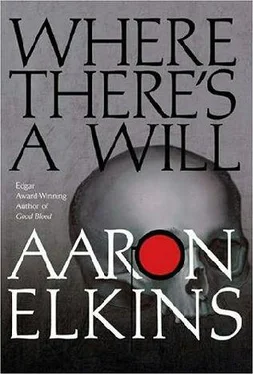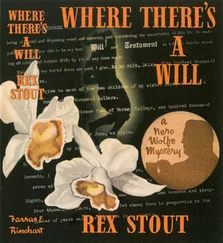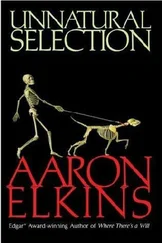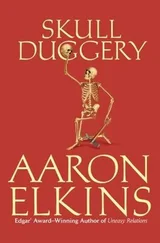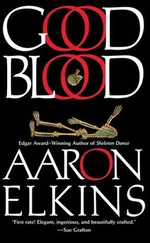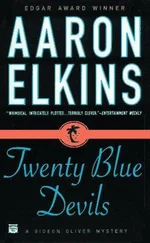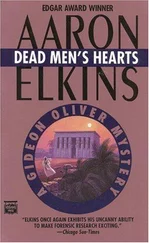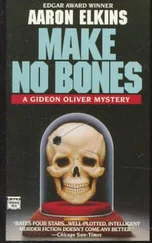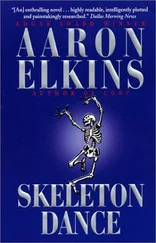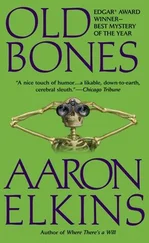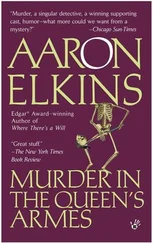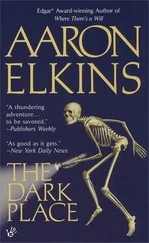Aaron Elkins - Where there's a will
Здесь есть возможность читать онлайн «Aaron Elkins - Where there's a will» весь текст электронной книги совершенно бесплатно (целиком полную версию без сокращений). В некоторых случаях можно слушать аудио, скачать через торрент в формате fb2 и присутствует краткое содержание. Жанр: Классический детектив, на английском языке. Описание произведения, (предисловие) а так же отзывы посетителей доступны на портале библиотеки ЛибКат.
- Название:Where there's a will
- Автор:
- Жанр:
- Год:неизвестен
- ISBN:нет данных
- Рейтинг книги:4 / 5. Голосов: 1
-
Избранное:Добавить в избранное
- Отзывы:
-
Ваша оценка:
- 80
- 1
- 2
- 3
- 4
- 5
Where there's a will: краткое содержание, описание и аннотация
Предлагаем к чтению аннотацию, описание, краткое содержание или предисловие (зависит от того, что написал сам автор книги «Where there's a will»). Если вы не нашли необходимую информацию о книге — напишите в комментариях, мы постараемся отыскать её.
Where there's a will — читать онлайн бесплатно полную книгу (весь текст) целиком
Ниже представлен текст книги, разбитый по страницам. Система сохранения места последней прочитанной страницы, позволяет с удобством читать онлайн бесплатно книгу «Where there's a will», без необходимости каждый раз заново искать на чём Вы остановились. Поставьте закладку, и сможете в любой момент перейти на страницу, на которой закончили чтение.
Интервал:
Закладка:
The boot, oozing water, was placed, sole down, on the massage table. With a pair of metal shears from the plane, Gideon sliced it open from the top down, first at the back, then down the front, and then-very carefully-over the instep, while John held it upright for him. When he had finished, he peeled the halves of leather apart, snipping a little more at the sole where it was necessary to get the halves completely spread. The few falling-apart shreds of sock still present were picked off and put aside.
“Wow,” breathed Lyle.
“Whoa,” said Harvey. “Fantastic.”
The skeletal foot, ossa pedis, lay upon the bed of clean, moist, white sand that covered the sole like an illustration in an anatomy text. Only a few of the phalanges-the toes-had been disarranged. The four men silently admired it for a few seconds, until Harvey abruptly sang out: “Lunch time, we got chicken fingers, we got barbecue chips, Twinkies, uh, we got Ding Dongs, uh, uh…”
“You got Ho Hos?” John asked hopefully.
“Of course, Ho Hos. Uh, Zingers, uh-”
“You guys go ahead,” Gideon said. “I want to look this over a little more. I still have a sandwich left. I could use a Coke or something, if there is one.”
The Shertz brothers, with chicken fingers on their minds and their interest in bones exhausted, retired to the Cessna for their meal.
“John, give me a hand with the table, will you?” Gideon said. By now the sun had started down and the massage table was no longer fully shielded by the thatched roof. “I don’t want the bones baking in that hot sun. They’ve been in the water too long; they’ll split if they dry too fast.”
“Thanks,” he said after they moved the heavy table a couple of feet. “Go get yourself something to eat if you want, John. I’m fine here.”
“Nah, I’m fine, too, Doc.”
Gideon stood looking down at the foot again. His sunglasses, smeared with perspiration and sunscreen, were laid on the table. He’d already made his first determination: The foot and the mandible were from two different people. You didn’t see feet like this in twenty-five-year-olds. The signs of arthritis in the joints, especially the metatarsals, the incipient osteoporosis, and the trivial and not-so-trivial deformities that sadly but predictably plague the ageing shoed (or booted) human foot suggested a minimum age in the fifties and probably older. The grainy look and feel of the bone went along with this; nothing like the young, baby-bottom smoothness of the mandible. As to sex…
“Well, you know,” John said brightly, “maybe I’ll just go see what the situation is with those Ho Hos, after all.”
“Hm? Okay, sure,” Gideon mumbled abstractedly.
“I’ll bring you that Coke when I come back.”
“Uhm.”
As to sex, he wouldn’t want to make a guess at this point; not with just a foot to go on. The bones were neither too big and robust to be female, nor too gracile to be male. There was a method, not a hundred percent reliable but better than guessing, for determining sex from combined measurements of the talus and calcaneus, but it took discriminant function analysis to do it, a statistical technique requiring a table of coefficients carried out to the fifth decimal place. And that he didn’t have. Besides which, the only measuring instruments the Shertzes had come up with were a metal tape measure and a yardstick, neither of which could come close to handling the tricky measurements involved on these asymmetrical, uniquely shaped bones.
There was also a way to estimate height from the length of the metatarsals, the long bones of the foot, but that, too, would have to wait, and for the same reasons.
For the moment, he was absorbed in looking closely at the calcaneus, which he now held in his left hand, turning it this way and that to examine the rough, curving, asymmetrical surfaces. Yes, this was a row of tiny exostoses-little spicules of bone-just forward of the calcaneal tuberosity, on the underside. And another little ridge that didn’t belong there, running longitudinally just in front of it, and a third bumpy, inch-long crest of bone on the upper side, where the bone was narrowest, behind the posterior articular surface. These irregularities were calluses, the strong, bony reinforcements the body laid down to heal fractures and strengthen repairs.
So this heel bone had been broken at least three times, maybe more (bone calluses could disappear completely, given long enough). All appeared to have been “stress” or “fatigue” fractures: not the result of sudden compression or blunt-force trauma, but of the building-up of repeated, relatively low-grade stress over time. Gideon examined the rest of the bones, looking for similar injuries. Nothing. So here was a man that had fractured his heel bone three times, but had never, as far as he could tell, broken any of the other bones in his foot.
Now that was interesting. The usual fatigue- or stress-related foot injuries-from walking, running, jogging-were found in the metatarsals and the toes; not in the calcaneus. Heel spurs, yes; you got those in spades, but not fractures, not usually. When you did see stress fractures of the calcaneus, however, they tended to be found in people who jumped or otherwise dropped from heights, with recreational parachutists and hang-gliding enthusiasts topping the list of orthopedic surgeons’ favorites. In those cases, however, associated injuries of the other bones of the foot could be expected; you didn’t just break your heel bone, you snapped a couple of metatarsals or crunched a cuneiform as well.
But recurring stress fractures of the calcaneus with no accompanying damage? Repeated forceful impact of the heel, but not the rest of the foot, against an unyielding surface? He had come upon the phenomenon in monographs before, but never in the flesh (so to speak). It was called “rider’s heel,” and it came from the way cowboys typically dismounted a horse, swinging their right leg-never the left-up and over the saddle and coming down hard on their foot, their right foot, smack on the narrow, raised heel of their boot. Again and again and again. Ouch. And the older the bone got, the thinner the cortex, the less dense the trabeculae, the more susceptible it would be to breaking.
Putting everything together, that seemed to mean “Lyle and Harvey-they need to know how long you’re gonna be.” Gideon, deep in his ruminations, hadn’t noticed John’s return.
“Not long.” He turned toward the plane and called: “If you can let me have a carton”-with his hands he indicated something shoe-box-sized-“and some paper for packing material, we can be on our way in ten minutes.”
“Roger, prof,” Harvey yelled back.
Gideon turned back to John, gesturing at the bones with a sweep of his hand. “It’s Magnus, all right, John.”
“Yeah?” John said, looking at the bones with renewed interest. “You know that?”
“Ninety percent sure,” Gideon said with a shrug. “Well, make it eighty-five.” He went over his reasoning, using the small, folding magnifying glass the brothers had provided, to show John the calluses, which John dutifully, respectfully, fingered.
“Of course,” Gideon said, “for all I know, there might be other things that would account for a repeatedly stress-fractured right calcaneus without signs of injury to the metatarsals or anything else-but I sure as hell can’t think of any likely ones.”
“Hold on a minute, Doc. If you don’t have his left, uh, calcaneus, how do you know that wasn’t broken, too? And if it was, then this dismounting theory wouldn’t work, would it?”
“No, it wouldn’t. And, of course it would have been nice to have the left foot, too, but there isn’t very much I can do about that, is there?”
Читать дальшеИнтервал:
Закладка:
Похожие книги на «Where there's a will»
Представляем Вашему вниманию похожие книги на «Where there's a will» списком для выбора. Мы отобрали схожую по названию и смыслу литературу в надежде предоставить читателям больше вариантов отыскать новые, интересные, ещё непрочитанные произведения.
Обсуждение, отзывы о книге «Where there's a will» и просто собственные мнения читателей. Оставьте ваши комментарии, напишите, что Вы думаете о произведении, его смысле или главных героях. Укажите что конкретно понравилось, а что нет, и почему Вы так считаете.
